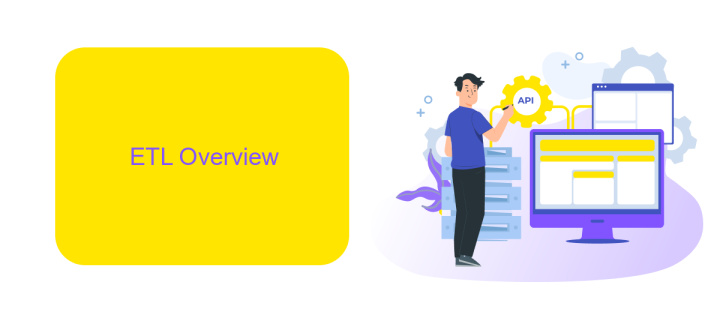ETL Data Loading
ETL (Extract, Transform, Load) data loading is a crucial process in data management and analytics. It involves extracting data from various sources, transforming it into a suitable format, and loading it into a target system for analysis and reporting. This process ensures data accuracy, consistency, and accessibility, making it indispensable for businesses aiming to leverage data-driven insights.
Introduction
ETL (Extract, Transform, Load) is a fundamental process in data management that involves extracting data from various sources, transforming it into a suitable format, and loading it into a target database or data warehouse. This process is essential for integrating data from disparate systems, ensuring consistency, and making it available for analysis and reporting.
- Extract: Gathering data from different sources, such as databases, APIs, and flat files.
- Transform: Converting the extracted data into a desired format, which may involve cleaning, filtering, and aggregating.
- Load: Inserting the transformed data into a target system, like a data warehouse or database.
Using tools like ApiX-Drive can simplify the ETL process by automating data extraction from various sources and facilitating seamless integration. ApiX-Drive offers a user-friendly interface and supports a wide range of data connectors, making it easier to set up and maintain data pipelines. This automation helps organizations save time and resources while ensuring data accuracy and reliability.
ETL Overview

ETL (Extract, Transform, Load) is a crucial process in data warehousing and analytics. It involves extracting data from various sources, transforming it into a suitable format, and loading it into a target database or data warehouse. This process ensures that data is accurate, consistent, and ready for analysis. ETL helps organizations consolidate data from multiple systems, making it easier to generate insights and support decision-making processes. The transformation step is particularly important as it cleanses, enriches, and structures the data, ensuring its quality and usability.
Modern ETL tools and services, such as ApiX-Drive, simplify the integration and automation of ETL processes. ApiX-Drive allows users to connect various data sources and applications without needing extensive coding knowledge. By leveraging such tools, businesses can streamline their data workflows, reduce manual intervention, and ensure timely and reliable data loading. This efficiency is critical for maintaining up-to-date data warehouses and supporting real-time analytics, ultimately driving better business outcomes.
Data Loading Techniques

Effective data loading is a crucial part of the ETL (Extract, Transform, Load) process, ensuring data is transferred efficiently and accurately from source systems to data warehouses or other storage solutions. Various techniques can be employed to optimize this process.
- Batch Loading: This method involves collecting data over a period and loading it in bulk at scheduled intervals. It is ideal for large volumes of data that do not require real-time processing.
- Incremental Loading: This technique loads only the new or updated data since the last load, reducing the amount of data processed and improving efficiency.
- Streaming: Data is loaded in real-time, providing immediate insights and updates. This is essential for applications requiring up-to-the-minute data.
- Parallel Processing: Utilizing multiple processors or threads to load data simultaneously can significantly speed up the loading process.
Choosing the right data loading technique depends on the specific requirements of your project, such as data volume, frequency of updates, and performance needs. Tools like ApiX-Drive can facilitate seamless integration and automation of data loading processes, ensuring that your data is always up-to-date and accessible. By leveraging the appropriate techniques and tools, organizations can enhance their data management strategies and drive more informed decision-making.
ETL Best Practices

When implementing ETL (Extract, Transform, Load) processes, it is crucial to adhere to best practices to ensure data integrity, efficiency, and scalability. A well-architected ETL pipeline can significantly enhance the performance and reliability of your data operations.
First and foremost, always validate your source data before extraction. Data validation helps in identifying and rectifying errors early in the process, thereby preventing corrupted data from propagating through your system. Additionally, ensure that your ETL processes are modular and reusable, which makes them easier to maintain and scale.
- Automate error handling and logging mechanisms to quickly identify and resolve issues.
- Use incremental data loading to optimize performance and reduce resource consumption.
- Implement data quality checks at each stage of the ETL process.
- Leverage tools like ApiX-Drive for seamless integration and automation of data workflows.
- Regularly monitor and audit your ETL processes to ensure they meet performance benchmarks.
By following these best practices, you can create a robust ETL pipeline that not only meets your current data needs but is also flexible enough to adapt to future requirements. Investing time in setting up a solid ETL framework will pay dividends in the long run, ensuring your data operations run smoothly and efficiently.
Conclusion
In conclusion, the ETL data loading process is a critical component of modern data management strategies. It ensures that data from various sources is efficiently extracted, transformed, and loaded into a centralized data warehouse, thereby enabling organizations to make data-driven decisions. The automation of ETL processes not only enhances accuracy and consistency but also significantly reduces the time and effort required for data integration.
Moreover, leveraging integration services like ApiX-Drive can further streamline the ETL process. ApiX-Drive offers robust tools for setting up integrations quickly and easily, allowing for seamless data flow between disparate systems. By utilizing such services, businesses can focus more on analyzing data rather than getting bogged down by the technical complexities of data integration. Ultimately, a well-implemented ETL strategy, supported by reliable integration tools, can greatly enhance an organization's ability to harness the full potential of its data.
FAQ
What is ETL in data loading?
Why is ETL important for businesses?
What are the common challenges in ETL processes?
How can automated tools help in ETL processes?
What is ApiX-Drive and how does it assist in ETL processes?
Strive to take your business to the next level, achieve your goals faster and more efficiently? Apix-Drive is your reliable assistant for these tasks. An online service and application connector will help you automate key business processes and get rid of the routine. You and your employees will free up time for important core tasks. Try Apix-Drive features for free to see the effectiveness of the online connector for yourself.

